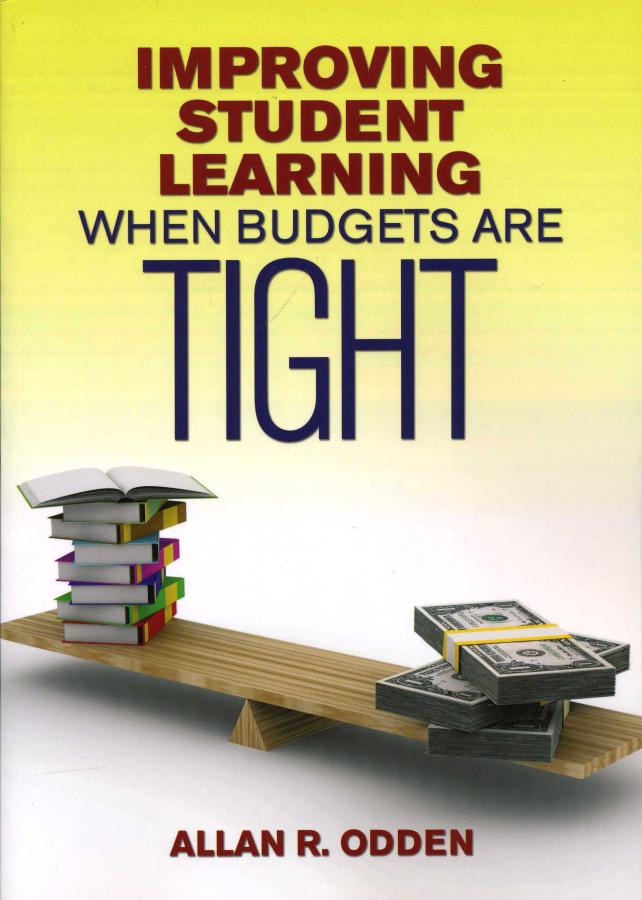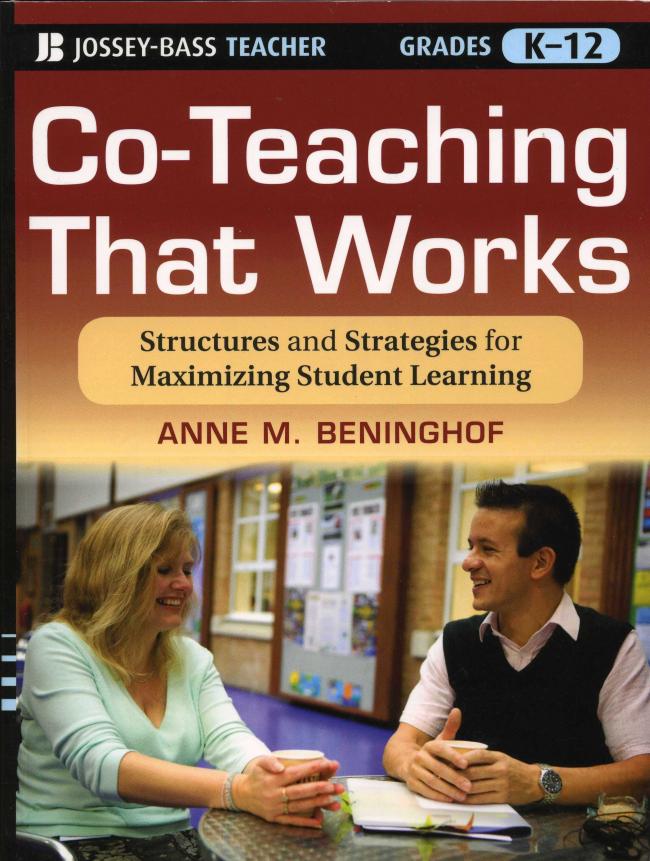Sections / Articles
Principal's Bookshelf: Jan/Feb 2013
Improving Student Learning When Budgets Are Tight
By Allan R. Odden.
Corwin, 2012, 184 pages.
 According to author Allan R. Odden, status quo budgeting will not work in the current high-stakes educational environment. He argues that effective use of educational dollars depends on explicitly linking research about improving schools and student performance with efficient resource-use practices. Such a connection becomes even more important as schools face fiscal constraints and budget cuts. Improving Student Learning When Budgets Are Tight provides school leaders with a strategic approach to resource use based on “concrete, specific actions that can be taken now, without major changes in the organization and governance of America’s schools systems.” Odden’s suggestions include both “macrodecisions” (made by states and districts) and “micro-decisions” (made by schools and classrooms), which he believes will improve educational outcomes, despite reduced budgets. “School[s] can improve learning and teaching using research and best-practice-based strategies that, in many cases, do not require more money but the reallocation of existing resources.”
According to author Allan R. Odden, status quo budgeting will not work in the current high-stakes educational environment. He argues that effective use of educational dollars depends on explicitly linking research about improving schools and student performance with efficient resource-use practices. Such a connection becomes even more important as schools face fiscal constraints and budget cuts. Improving Student Learning When Budgets Are Tight provides school leaders with a strategic approach to resource use based on “concrete, specific actions that can be taken now, without major changes in the organization and governance of America’s schools systems.” Odden’s suggestions include both “macrodecisions” (made by states and districts) and “micro-decisions” (made by schools and classrooms), which he believes will improve educational outcomes, despite reduced budgets. “School[s] can improve learning and teaching using research and best-practice-based strategies that, in many cases, do not require more money but the reallocation of existing resources.”
The book is divided into six chapters. Chapter One presents an overview of research about school improvement. Here, Odden also provides his Plan of Action, which contains 12 key education-improvement strategies. While the other five chapters address topics such as resources, strategic budgeting, educator talent, and technology, all issues and suggested decisions are filtered through the lens of the Plan of Action. As a result, each chapter does not simply suggest ways to reduce budgets or increase resource efficiency, but it also challenges educational leaders to ponder their priorities and practices when considering both short-term and long-term possibilities.
Odden, for example, challenges typical class reduction practices and advises this money might be better spent on other resources. He also argues against automatic pay increase for teachers and presents possible alternative salary structures. As a mid-career school administrator, I especially enjoyed his presentation on educator pensions, which include examples of current pension systems and their alternatives. This book, which features easy-to-understand analysis, is an excellent and practical addition to the school improvement literature.
Reviewed by Jeffrey D. Carroll, principal of J. Blaine Blayton Elementary School in Williamsburg, Virginia.
Co-Teaching That Works
By Anne M. Beninghof
Jossey-Bass, 2012, 260 pages.
 I always enjoy reading practical, informative books that generate conversation, provide tools for immediate application, and serve as ongoing resources. This is one such book. Before I had even read it, a teacher saw it on my desk and began riffling through the pages, exclaiming, “Oh, this looks interesting!” Her immediate assessment: It seemed like a practical resource that would be a great book study selection. Then she asked me if she could have an extra copy!
I always enjoy reading practical, informative books that generate conversation, provide tools for immediate application, and serve as ongoing resources. This is one such book. Before I had even read it, a teacher saw it on my desk and began riffling through the pages, exclaiming, “Oh, this looks interesting!” Her immediate assessment: It seemed like a practical resource that would be a great book study selection. Then she asked me if she could have an extra copy!
Author Anne M. Beninghof defines co-teaching as “a coordinated instructional practice in which two or more educators simultaneously work with a heterogeneous group of students in a general education classroom.” Many of us naturally think of coteaching between special educators and mainstream teachers. Beninghof challenges readers to think beyond this scenario and consider the ways in which partnerships between educators and other colleagues, including ELL specialists, technology instructors, and literacy teachers, can support powerful learning experiences for students.
The first part of the book defines co-teaching, discussing the importance of relationship building to benefit communication and planning time, and exploring a variety of common challenges. Checklists and worksheets are helpful resources to guide teachers’ thinking and planning for successful co-teaching.
The second part of the book presents nine different models of co-teaching. In addition to providing examples of each model in action, the book discusses the roles and responsibilities of each teacher within the model, the pros and cons of each approach, and guiding questions for teachers considering its use.
The third section focuses on co-teaching arrangements between classroom teachers and various specialists and includes examples of lesson plans and detailed roles for each.
The book concludes with a section detailing instructional strategies that would be useful in co-taught and solo-taught classes.
Though my family’s move to another state resulted in me leaving my principal position, several teachers in my former school will be reading the book together this fall. I am confident this book will be a useful, practical, and thought-provoking resource for them.
Reviewed by Ayesha Farag-Davis, who is a doctoral candidate at Lesley University and is a former principal.
Your comments are always welcome, so send us an email at publications@naesp.org to let us know what you think about this issue.
Copyright © National Association of Elementary School Principals. No part of the articles in NAESP magazines, newsletters, or Web site may be reproduced in any medium without the permission of the National Association of Elementary School Principals. For more information, view NAESP's reprint policy.
| Attachment | Size |
|---|---|
| Carroll_JF13.pdf | 762.83 KB |
| FaragDavis_JF13.pdf | 390.01 KB |